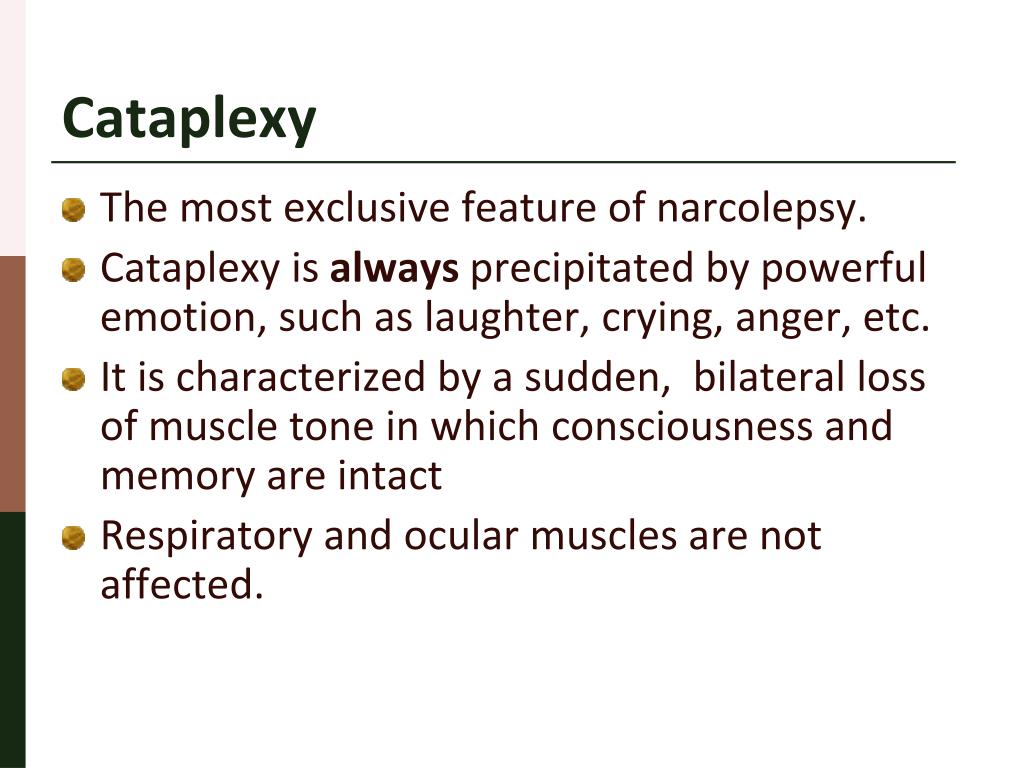
Setting Sleep disorder and neurology clinics in the United States and Europe, with biological testing performed at Stanford University, Stanford, Calif. Clinical and demographic features were compared in narcoleptic subjects with and without low CSF hypocretin-1 levels. Signal detection analysis was used to determine the CSF hypocretin-1 levels best predictive for International Classification of Sleep Disorders (ICSD)–defined narcolepsy (blinded criterion standard).
#Cataplexy and narcolepsy definition series#
Objectives To delineate the spectrum of the hypocretin deficiency syndrome and to establish CSF hypocretin-1 measurements as a diagnostic tool for narcolepsy.ĭesign Diagnosis, HLA-DQ, clinical data, the multiple sleep latency test (MSLT), and CSF hypocretin-1 were studied in a case series of patients with sleep disorders from 1999 to 2002.

Shared Decision Making and CommunicationĬontext Narcolepsy, a neurological disorder affecting 1 in 2000 individuals, is associated with HLA-DQB1*0602 and low cerebrospinal fluid (CSF) hypocretin (orexin) levels.

Scientific Discovery and the Future of Medicine.Health Care Economics, Insurance, Payment.Clinical Implications of Basic Neuroscience.



 0 kommentar(er)
0 kommentar(er)
